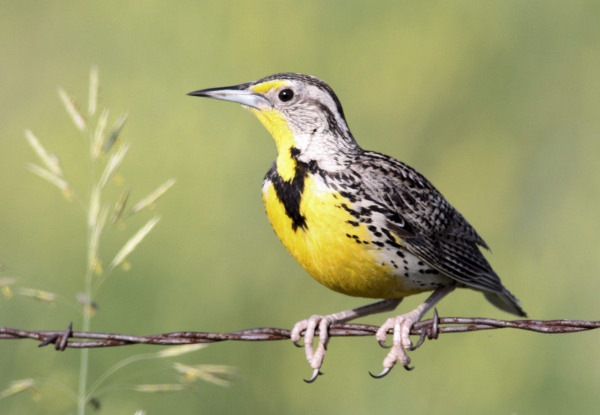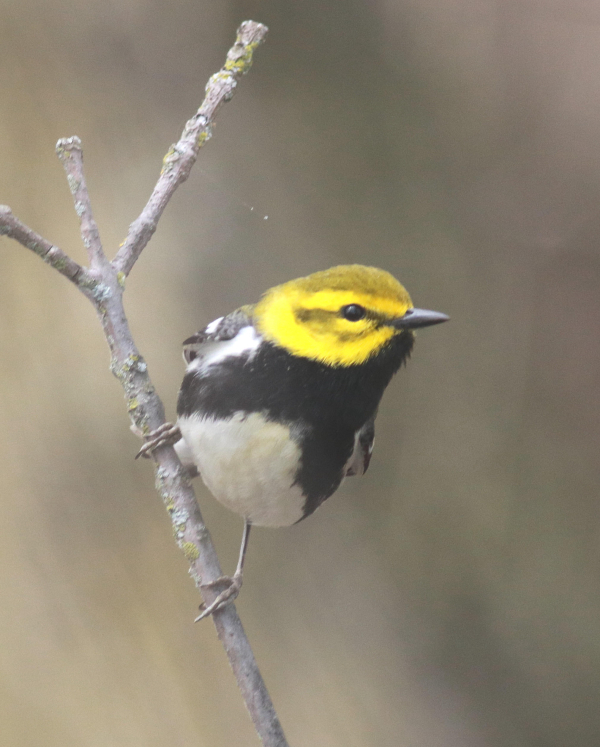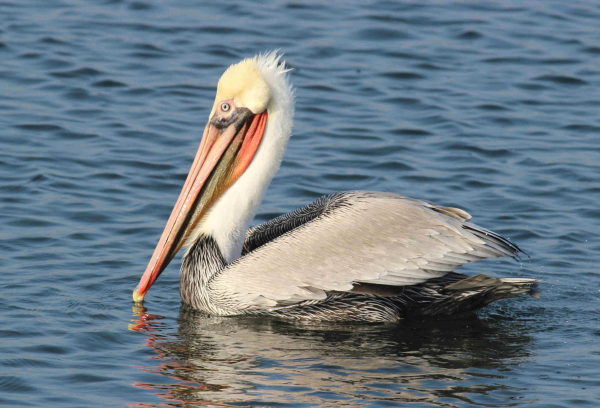
“The story is not over,” says Michael Parr, director of American Bird Conservancy and co-author of the study published in the journal Science that shows extreme bird population declines in the United States and Canada during the past 50 years. The scientists who produced this research believe it’s possible to bring bird populations back, even in the face of the strong headwinds blowing against environmental policies these days. The climate fight, maybe surprisingly, may provide a model for ending declines and increasing bird numbers.
Despite the American government’s announced intention to withdraw from the Paris Agreement, the United States may still come close to meeting its 2025 goal for reducing greenhouse gas emissions, thanks to the cooperation and climate commitments of 22 states, 550 cities, and 900 companies. Collective actions on a national scale could reverse bird population declines scientists say, but the United States and Canada must also act together — as nations, economic powers, and citizens. The following list of actions are emphasized:

1) Government Leadership on Bird Conservation is Desperately Needed — More than 100 years ago, in the middle of World War I, the governments of the United States and Canada made birds a priority by enacting a Migratory Bird Treaty to reflect the will of the people — that birds are protected as a shared international natural heritage. It seems inconceivable that an international treaty on birds could pass political muster today, with the Migratory Bird Treaty Act under attack in the United States and efforts to weaken environmental laws in both countries. But there are also bills and policies being forwarded in Congress and Parliament that could provide responses to the current crisis for North America’s avifauna.
2) Recovering America’s Wildlife Act (US) — Introduced in the House of Representatives with bipartisan sponsorship, this bill would increase federal funding for state conservation programs by more than 1,500 percent — a game changer for locally led habitat conservation. The bill redirects $1.4 billion of existing annual revenue from Treasury funds (without asking for more from taxpayers or businesses) toward state and tribal wildlife conservation plans. The money would be used for habitat conservation projects that could benefit more than 500 bird species.
3) Bird-Safe Buildings Act (US) — This bipartisan House bill would require that construction of federal government buildings under construction or alteration must incorporate bird-safe building materials and design features to limit risks of bird collisions.
4) Migratory Bird Treaty Act/Convention (US and Canada) — The Migratory Bird Protection Act, proposed in the US House, would restore the Migratory Bird Treaty Act’s prohibition on incidental takes, reversing a recent policy change. In 2017, the Trump Administration weakened the Act so companies that kill birds through negligence (such as the 2010 Deepwater Horizon oil spill that killed a million birds along the Gulf of Mexico) would no longer be subject to penalties. Canada has not changed the Treaty: “The Government of Canada continues to interpret the century-old Migratory Bird Treaty as to prohibiting the incidental take of migratory birds,” said Gabrielle Lamontagne of Environment and Climate Change Canada.
5) Convention on Biological Diversity (Canada) — The Convention on Biological Diversity is a United Nations agreement signed in 1994 to increase the global area set aside for habitat conservation. Every U.N. member nation has joined the effort except the United States (because the Senate never ratified the Convention). Meanwhile, in 2018 Canada committed $1.35 billion to double its nation’s protected areas and meet its Convention target. The funding has created several new reserves, including Thaidene Nene National Park in the Northwest Territories. Formed in a partnership between federal, territory, and First Nations governments, Thaidene Nene is more than twice the size of America’s Yellowstone National Park and provides essential habitats to more than 10 million nesting birds.
6) Bird-friendly Business — When the governments of Canada, the United States, and Mexico created NAFTA, they recognized that companies throughout North America, joined by free trade, also share responsibility for the continent’s natural resources. In response, they created a North American Bird Conservation Initiative in 1999 that recognizes birds as an international “natural economic resource;” that agreement is still in effect today. Threats to birds are also threats to business — deforestation, pollution, and climate change also threaten steady supply chains, stable pricing, and economic growth. The good news is that many good business sustainability efforts are already underway in five of the economic sectors that have the most impact on birds.
7) Paper and Wood Products — Sustainably sourced wood products certified by the Forest Stewardship Council or Rainforest Alliance come from forest habitats that will continue to produce timber and support birds. Every company that buys anything that comes from a tree — ranging from printer paper, napkins, and paper bags to furniture and building materials — can help birds by choosing certified sustainable forest products.
8) Agriculture in the United States and Canada — Grass-fed beef tastes better and is a premium selling point for consumers that provides ranchers with a financial incentive to restore healthy grasslands. Several conservation groups, including The Nature Conservancy, Audubon, and the Bird Conservancy of the Rockies, are helping ranchers with cattle grazing management that’s better for beef producers and birds.
9) Agriculture in Latin America — There are almost 150 neotropical migratory bird species in the United States and Canada that fly south to Latin America for part of the year. American and Canadian companies have an ethical responsibility to ensure their supply chains are not deforesting wintering habitat for those birds. Certifications such as Smithsonian Bird Friendly (for coffee) and Rainforest Alliance (for coffee, chocolate, fruit, and beef) can help guide consumers and their purchasing power toward food that supports forests and birds.
10) Commercial Fisheries — Companies that rely on seafood have a stake in ensuring stable fisheries that also support seabirds. The Monterey Bay Aquarium has partnered with 300 businesses on seafood selling and purchasing practices that improve the sustainability of global fisheries and aquaculture.
11) Energy — The phasing out of fossil fuels will help birds and their habitats by reducing impacts from climate change. Programs such as The Nature Conservancy’s “Site Wind Right” campaign are guiding the next generation of renewable energy projects by consulting on wind turbine placement in areas with limited disruption to nesting areas and migratory corridors for wildlife.

Everyone Can Help by Taking 7 Simple Actions
Ken Rosenberg, lead author on the Science study and conservation scientist at the Cornell Lab of Ornithology shared that, “If we take simple actions, we can reverse these bird declines.”
For more information about these everyday, at-home steps that can help birds, see https://www.birds.cornell.edu/home/seven-simple-actions-to-help-birds/ where you will find a summary of each problem, a description of the simple action that leads to a solution, and links to additional resources.










